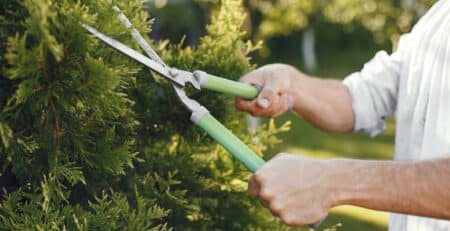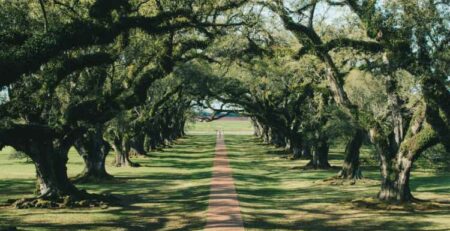Are Trees a Renewable Resource?
Human-made waste is a subject of increasing concern for a lot of people. The piles of waste gathering in landfills, dumps, and other places have huge repercussions on environments local and worldwide. Aside from being unsightly, many of these waste dumping grounds end up gathering areas for lots of toxins. These can become a liquid called leachate that pollutes the nearby soil and local groundwater with leachate. Large piles of waste also contain enough organic material that, in such conditions, becomes methane. As such, they contribute to huge amounts of potent greenhouse gasses that contribute to climate change through global warming.
Why does this matter? It matters because a lot of people are looking to reduce the amount of waste that they produce. There are various ways to do this, including reducing our use of resources we don’t truly need and recycling what can be recycled. One way to reliably reduce our waste on a personal and communal level is to use renewable resources. Here, we will explain what renewable resources and explore whether or not trees count as renewable resources.
 What are Renewable Resources?
What are Renewable Resources?
Renewable resources are those that can be replenished at a rate that matches or exceeds the rate at which they are consumed. These natural resources can either renew themselves automatically, through natural processes or with human intervention.
Examples of renewable resources include solar energy, wind energy, and geothermal pressure, all of which have an endless supply (or at least a supply that is considered to be endless). Additionally, oxygen, leather, and other natural resources like fish can be renewed because humans are able to help replace the volume that we use.
Renewable resources are important because, firstly, they reduce waste. Most renewable resources can be naturally and safely disposed of, usually through biodegradation that returns them to the earth. They are also important because they are inexhaustible when used correctly. We don’t have to worry about running out of renewable resources so long as we make sure that they are being renewed at the rate they are being used.
On the other hand, fossil fuels such as oil are not renewable resources. Once the oil is burned, used, or otherwise consumed, there is no way to effectively or efficiently replenish it since oil creation is a natural process that takes millions of years.
 Trees – a Renewable Resource
Trees – a Renewable Resource
To answer the question simply: yes, trees are a renewable resource. They have a huge range of practicalities for human use across multiple applications and can be naturally replaced. We can replace the trees we harvest by saving seeds and farming new forests as we use wood from other forests. We can also use parts of trees without having to harvest the mother plant’s entirety, allowing it to grow back the parts that we use.
Here are a few of the products that we can and do make from trees:
Wood Products
Wood is still a hugely popular choice to make products of all sorts. Housing materials such as support beams, walls, and architectural features are all made using wood. We also use wood to make a huge range of household goods, including furniture, toys, floors, cabinets, decks, doors, picture frames, and so much more. Wood is one of the most widely used materials in products across all types and will continue to be for a long time to come.
 Pulp
Pulp
Wood is pulped, creating a resource that can be used to make paper products of all kinds. This includes not just regular old paper and the books, notepads, and various products made from it. It also includes cardboard, cartons, tissues, toilet paper, wallpaper, blankets, insulation, even diapers, and sanitary pads.
Cellulose
Cellulose fibres may not be quite as ubiquitous as wood or pulp, but there is still a wide range of applications for them. These fibres are harvested from trees and used in cellophane, adhesives, floor tiles, a range of food additives, twine, rayon clothing, photographic film and more.
 Biomass
Biomass
Trees are also a strong potential source of renewable energy. Biomass is a general term for carbon-neutral electricity (meaning it doesn’t add to your carbon footprint when you use it). Various parts of trees, including tree limbs, tops, and smaller trees, can be used as biomass. Wood waste byproducts such as loose timber, bark, and sawdust can also be used as biomass. Biomass fuel is already being used in many off-the-grid properties. It is famously used in forest product manufacturing, using the waste of their production methods to partially fuel them.
Chemicals
Trees can be broken down into a range of chemicals used widely across all manner of products. These chemicals are extracted from threes and then turned into tar, scented oils, natural dies, perfumes, cleaning products, menthol, turpentine, and even medications for cancer, malaria, and Parkinson’s disease. The chemical applications for trees are almost as numerous as the sheer variety of wood products created from them.
 Keeping Trees Renewable
Keeping Trees Renewable
As mentioned, trees are renewable, in part, because we can simply replant trees at a carefully managed rate to make sure that they are growing at the same rate that we are harvesting them. We can also carefully harvest parts of trees such as branches and treetops without harming the mother plants, allowing them to grow back what we cut from them.
However, aside from harming and managing tree growth, we can also affect how renewable trees are by controlling and boosting the factors that influence their growth rate. Typically, this means helping improve the photosynthesis rates of trees as best as possible.
Typically, renewable tree harvesting is practiced in hotter climates because trees in those climates have higher photosynthesis rates. This allows trees to grow and regenerate much more quickly, especially if the temperature doesn’t vary over ten degrees throughout the day.
Similarly, we can help replenish the trees that we use by ensuring that they get the right nutrition. By making sure that the soil around trees provides the nitrogen, phosphorous, and potassium that trees need to survive (alongside the host of other elements they need in smaller amounts like sulphur, calcium, zinc, and so on), we can make sure that the trees have all of the building blocks of life they need to grow.
Tree farms also pay close attention to the spacing of the trees that they plant. Trees grow more and more quickly when they have plenty of access to sunlight. As such, many who are following renewable tree practices will space them out enough to maximize growth rates for as many of them as possible.
 Supporting the Use of Trees as a Renewable Resource
Supporting the Use of Trees as a Renewable Resource
There are many efforts to try and expand on the use of trees as a renewable resource, including the increasingly popular use of wood and other parts of trees as biomass. Many of these efforts involve encouraging sustainable forest management and supporting a wood products industry that ensures healthier forest landscapes and more efficient tree growth.
As the demand for renewable energy increases, some call for more opportunities to capitalize on this need, such as subsidizing renewable energy supplies in smaller communities and for private use. The wider availability of sustainably grown and harvested biomass could help move consumers away from non-renewable energy sources like oil all the sooner.
Others call for third-party bodies to be created that can independently certify forests to make sure that the trees that are harvested within are being grown and used as sustainably as possible. There are existing tree farm system certification bodies with regulations that could be made into a requirement or simply incentivized by the law.
Energy resources are regulated heavily in many instances. One way to help make trees a more widely used renewable resource is to avoid any restrictions or complicated regulations that could make it harder to harvest and sell sustainably grown biomass products.
The call for trees as a renewable resource is helped by the fact that trees help purify the water, soil, and even the air we breathe, combat global warming by reducing CO2 levels and support a healthier ecosystem for humans and animals alike all help to make a case for growing reliance on trees in the future.
 Trees are a Renewable Resource
Trees are a Renewable Resource
So long as they carefully managed to ensure that they are grown and harvested as sustainably as possible, trees can be used as a sustainable resource. Only the future can tell whether we will capitalize on their sustainable potential, but several groups and industries are pushing for that future. As our need for sustainable resources grows in the future, trees may become a much more viable option.







